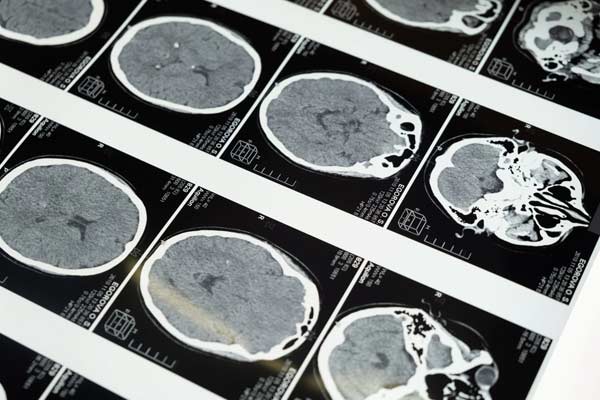Fibromyalgia is a long-term condition affecting millions globally. It causes body pain, fatigue, and sensitive spots.
While these symptoms are well-known, other symptoms associated with fibromyalgia, including internal tremors, are not as widely recognized.
Internal tremors are a common symptom of fibromyalgia. They are uncontrollable and fluttering sensations that occur inside the body.
However, describing how these internal tremors feel is relatively hard, as they produce a unique feeling to those with them. Recent findings have suggested that muscle spasms and pain, common fibromyalgia symptoms, can lead to internal tremors.
The exact cause of internal tremors in fibromyalgia is still unknown. Nonetheless, it’s speculated that they might be connected to how the brain and spinal cord manage pain and other sensory signals.
It is important to note that internal tremors can also be a symptom of other medical conditions, such as Parkinson’s disease and multiple sclerosis.
Internal Tremors and Fibromyalgia
Internal tremors are a common symptom of fibromyalgia. These tremors are often described as a vibration or shaking sensation felt inside the body.
They can affect any body part, including the arms, legs, torso, and head. Internal tremors are different from muscle tremors, which are visible movements of the muscles.
Fibromyalgia is a neurological condition characterized by extensive muscle and joint pain tenderness and is often accompanied by fatigue, sleep issues, and cognitive difficulties. The exact cause is unclear, but it’s thought to be linked to alterations in the brain’s pain processing.
Internal tremors are thought to be related to the muscle spasms and pain that are common in fibromyalgia. They may also be related to the fatigue and sleep disturbances associated with the condition.
Internal tremors, though unsettling, are usually not harmful or a significant health concern.
Managing internal tremors in fibromyalgia often involves medications and lifestyle adjustments. Medications typically used for fibromyalgia, including antidepressants and anticonvulsants, may also help reduce internal tremors.
Lifestyle changes like exercise, stress management, and healthy sleep habits may help alleviate tremors and other fibromyalgia symptoms.

Common Symptoms of Fibromyalgia
Here are some of the most common symptoms associated with fibromyalgia:
Pain
The primary symptom of fibromyalgia is pain, which can be widespread and persistent. The pain is often described as a dull ache that lasts for at least three months and occurs on both sides of the body.
It can also appear above and below the waist. In addition to widespread pain, people with fibromyalgia may also experience tender points, specific areas of the body that are particularly sensitive to touch.
Fatigue
Fatigue is another common symptom of fibromyalgia. It is often described as exhaustion that does not improve with rest. People with fibromyalgia may also experience sleep disturbances, contributing to fatigue.
Fibro Fog
Fibrofog is a term used to describe the cognitive symptoms associated with fibromyalgia. These symptoms can include memory problems, difficulty concentrating, and trouble with word recall. Fibrofog can be particularly frustrating for people with fibromyalgia, impacting their ability to work, socialize, and perform everyday tasks.
Headaches
Headaches, ranging from mild to severe, are a frequent symptom of fibromyalgia and may occur with additional symptoms like sensitivity to light and sound.
Numbness and Tingling
Numbness and tingling are also common symptoms of fibromyalgia. These sensations can occur in the hands, feet, arms, and legs and may be accompanied by weakness or heaviness in the affected area.
Causes and Risk Factors
Some possible causes and risk factors of fibromyalgia include:
- Age: Fibromyalgia can impact individuals at any age, though it predominantly occurs in middle-aged and older adults.
- Women: Women are more likely to develop fibromyalgia than men.
- Stress: Emotional or physical stress can trigger or worsen fibromyalgia symptoms.
- Physical trauma: Fibromyalgia can develop after a physical injury or trauma, such as a car accident or surgery.
- Chronic illnesses: People with other chronic diseases, such as rheumatoid arthritis, lupus, or osteoarthritis, may be at a higher risk of developing fibromyalgia.
It is important to note that not everyone with these risk factors will develop fibromyalgia, and some people with fibromyalgia may not have any of these risk factors. More research is needed to understand the causes and risk factors of fibromyalgia fully.

Diagnosis of Fibromyalgia
Diagnosing fibromyalgia can be challenging as no specific test is available to confirm the condition. The diagnosis is usually based on the patient’s symptoms and a physical exam.
The American College of Rheumatology (ACR) has established diagnostic criteria requiring widespread pain for at least three months and tenderness at specific points on the body.
These tender points are located at 18 specific sites on the body and are commonly used to help diagnose fibromyalgia.
During the examination, the doctor will look for indications of conditions with symptoms similar to fibromyalgia, such as rheumatoid arthritis, lupus, and hypothyroidism, possibly conducting blood tests to eliminate other possibilities.
Additionally, the doctor might have the patient fill out a questionnaire to evaluate their symptoms and medical history, including inquiries about pain, fatigue, sleep, and mood.
It’s crucial to understand that while fibromyalgia is neither progressive nor fatal, it can profoundly affect one’s quality of life. Thus, seeking medical help is vital for persistent pain and other related symptoms.
Treatment and Management Techniques
There is no cure for fibromyalgia, but various treatment and management techniques can help alleviate symptoms and improve quality of life. The approach to treatment is typically multidisciplinary, involving a combination of medication, exercise, relaxation techniques, and physical therapy.
Medication
Several medications are effective in managing fibromyalgia symptoms. These include:
- Duloxetine
- Milnacipran
- Pregabalin
- Amitriptyline
Nonsteroidal anti-inflammatory drugs (NSAIDs) and opioids are not effective in managing fibromyalgia symptoms and are generally not recommended.
Exercise
Engaging in consistent exercise can alleviate pain and enhance physical capability for those with fibromyalgia. Activities like walking, swimming, or biking are beneficial. Additionally, weight lifting can aid in boosting strength and flexibility.
Relaxation Techniques
Stress can worsen fibromyalgia symptoms. Techniques like deep breathing, meditation, and yoga can help ease stress.
Physical Therapy
Physical therapy can enhance strength, flexibility, and movement for fibromyalgia patients. A therapist can create a personalized exercise plan and ensure the correct form and technique are used.
Massage
Massage therapy can alleviate pain and enhance physical well-being for those with fibromyalgia by relaxing muscles and boosting circulation, thus mitigating pain and stiffness.
Acupuncture
Acupuncture, which involves inserting thin needles at specific body points, has been found to alleviate pain and enhance physical function in some people with fibromyalgia, according to several studies.
Lifestyle Changes and Coping Strategies
While there is no cure for fibromyalgia, lifestyle changes and coping strategies can help manage the symptoms, including internal tremors. Here are some lifestyle modifications that may help alleviate the discomfort associated with internal tremors:
Exercise: Engaging in consistent, low-impact physical activities like walking, swimming, and cycling can alleviate muscle pain and tension, enhance sleep quality, and elevate mood for individuals with fibromyalgia. However, before initiating any exercise regimen, seeking advice from a healthcare professional is advised for optimal safety and benefit.
Diet: A well balanced diet with fruits, vegetables, whole grains, and lean protein can boost health and lessen inflammation, especially for those with fibromyalgia.
Relaxation Techniques: Stress can intensify symptoms of fibromyalgia, including internal tremors. Employing relaxation methods like deep breathing, meditation, and yoga can aid in stress reduction and encourage relaxation, making symptoms more manageable.
Tai Chi: Tai chi is a gentle exercise blending slow movements with deep breaths and meditation. It’s proven to ease pain and enhance life quality for those with fibromyalgia.
Alcohol and Caffeine: Limiting or avoiding alcohol and caffeine is advised as they can interfere with sleep and worsen symptoms of fibromyalgia, such as internal tremors.
Besides lifestyle changes, there are also coping methods available that can alleviate the symptoms of fibromyalgia, such as internal tremors:
Pacing: Pacing involves breaking up activities into smaller, more manageable tasks to avoid overexertion and exacerbation of symptoms.
Mindfulness: Mindfulness involves staying present and embracing thoughts and feelings without judgment. It aids in stress reduction and promotes relaxation.
Support Groups: Participating in a support group can offer emotional aid and useful tips for managing fibromyalgia, helping alleviate feelings of isolation and loneliness.

Exploring the Neurological Aspect
Fibromyalgia is a multifaceted condition impacting the whole body, particularly the nervous system, which relays signals between the brain, spinal cord, and various other body parts.
In fibromyalgia, the nervous system is thought to be hypersensitive, leading to widespread pain and other symptoms.
Neurotransmitters are chemicals in the brain that transmit signals between nerve cells. In fibromyalgia, imbalances in neurotransmitters such as serotonin, dopamine, and norepinephrine may occur, impacting the transmission of signals.
These imbalances can contribute to the neurological symptoms of fibromyalgia, including internal tremors.
The cerebellum, situated at the brain’s base, manages movement and balance. In those with fibromyalgia, it may malfunction, causing coordination and balance issues and contributing to the internal tremors often experienced by affected individuals.
Research has also shown that people with fibromyalgia may have abnormalities in certain brain areas, including the amygdala and the prefrontal cortex.
These areas are involved in processing pain signals and regulating emotions, respectively. Abnormalities in these areas may contribute to fibromyalgia’s pain and emotional symptoms.
Besides neurological factors, individuals with fibromyalgia may have abnormalities in the spinal cord and other areas of the central nervous system. These irregularities could be contributing to the widespread pain and various other symptoms experienced.

 Melinda Miles is a courageous fibromyalgia warrior living with the condition for over 10 years. She is an advocate and voice in the fibromyalgia community, having created an online blog, TheFibrowarriors.com, to provide education, support, and community for those affected by this often misunderstood condition.
Melinda Miles is a courageous fibromyalgia warrior living with the condition for over 10 years. She is an advocate and voice in the fibromyalgia community, having created an online blog, TheFibrowarriors.com, to provide education, support, and community for those affected by this often misunderstood condition.